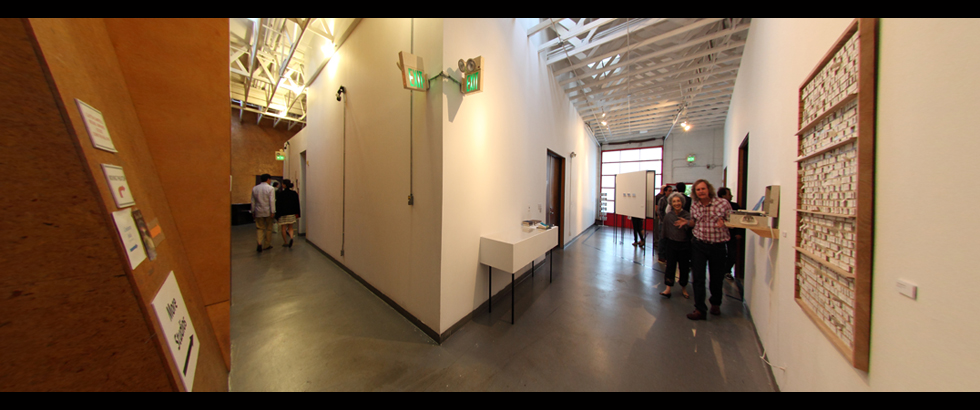Artists
Photo Credit: NIU Chun-Chiang
TSAI Kuen-Lin
TSAI Kuen-Lin
| Location | USA / Los Angeles |
|---|---|
| Residency | 18th Street Arts Center |
| Year of the Grant | 2012 |
| Personal Website |
TSAI Kuen-Lin's Personal Website
TSAI Kuen-Lin's Personal Website |
Artist Statement:
My work provides a sensory interface for the audience to experience new senses. It is often presented in the combined forms of optical and sound stimulations. One’s ability to see and hear is the key incentive to one’s ability to react bodily. This ability could potentially reshape one’s sensory experience. I believe that our awareness of the world comes from the sum of our personal sensory receptors (senses). A new recognition of the world in relation to one’s self is then established. Therefore, I always make sure to investigate the location for installation (targets of investigation may include wind direction, sunlight, surrounding sounds, people’s activity patterns, and the local industry etc.) and come up with appropriate pieces for that location. I hope to constantly generate new sensory experiences for my audience in my work, and change the stereotypical recognition of our world through this type of audience participation.
Residency Recollections:
An important homework for me in different artists-in-residency sites has been to understand one or more national trait via living and conversing with others. Many cultural conflicts require no obvious explanation. All one needs to do to understand such friction is to pay attention to other people’s body and verbal language. Careful observation of different people could reveal their national traits. Then I could utilize selected elements from my observations in my work.
When talking about the so-called networking tactics in the US, I think that few Americans care about art in our small island country. If they don’t even quite understand the sensitive question of ‘who’s the real China’ between People’s Republic of China and Republic of China, how could they spare the time to really understand ‘Taiwan?’ According to the curator at 18th Street Arts Center, a group of young LA artists would be led to France for an exhibition in October for introducing West Coast art to Europe and to show that New York (East Coast) is not the single art scene in America.
It goes without saying that even a great nation like the US delineates its own ‘East’ and ‘West’ art circles. A small country like Taiwan would most definitely argue amongst ourselves about the uneven distribution of arts resources in the metropolitan Taipei when compared to the Southern parts of the island. It is obvious that the US is looking towards opportunities in Europe and that America does not value Taiwanese art as much. They hold a different attitude towards Europe. For example, the LA arts circle selects artworks and techniques originated from the West Coast, and then come up with discourses looking at the relationship between the art and history of the area. This entire package tells the story of what West Coast/LA contemporary art is all about and how it is promoted internationally.
Reflecting on the Taiwanese art field, we see exports turning into imports. Our art functions within the realm of ‘international art identification’ and we cannot produce our own unique identification. That is why the so-called ‘Taiwanese Art’ does not exist internationally. All we are ever going to have is the ‘Manhattan of Tamsui River’ or ‘Kyoto in the Grand Tainan Area.’ It seems like we are unable to imagine our own cultural landscapes without the backing of foreign cultural landscapes. Taiwanese artists often exhibit their works for ‘a little bit’ out in foreign lands, and then return to our lonely selves back on the island. Ultimately, we are merely consuming ourselves without a thoroughly planned and long-term strategy for exporting our own cultures.


